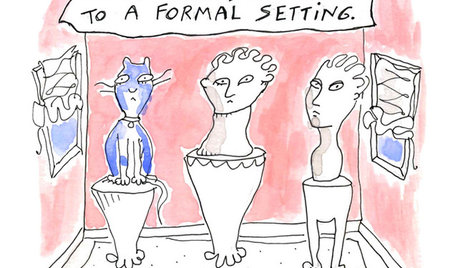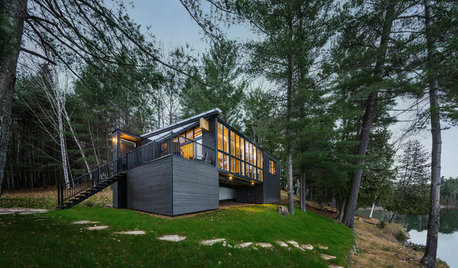Beautiful Bobcat
vilcat
16 years ago
Related Stories

ACCESSORIESFound Objects: The Most Natural Decor of All
They're beautiful, plentiful and best of all, free. See how to turn surprise finds into uniquely personal displays
Full Story
KITCHEN DESIGNKitchen of the Week: Elegant Farmhouse Style on the Water
Beautifully designed cabinets and more lend a timeless appeal to this kitchen overlooking a river in Canada
Full Story
GARDENING GUIDESLearn the Secret to Bigger and Better Roses
Grow beautiful roses using both ordinary and unusual soil amendments
Full Story
GREEN BUILDINGJust Add Water: Rain Barrel Magic
Take your rainwater storage from practical to beautiful with a new breed of design-friendly rain barrels
Full Story
HOUZZ TOURSHouzz Tour: Tree House Living Inspires Southern Home
Embracing nature but with comforts like a hanging hot tub, this South Carolina house lets the homeowners enjoy the best of both worlds
Full Story
GARDENING GUIDESHow to Avoid Overcrowded, Overpruned Shrubs
Go for a more natural look that’s easier and less expensive to maintain by giving your plants the right amount of growing room
Full Story
ARCHITECTUREStates of Style: Arizona's Grand Appeal
From golden sunsets to turquoise gemstones, this desert state embraces colorful and bold design
Full Story
PETSHouzz Call: Send in the Design Cats
Post your best photo of your cat at home, in the garden or with you in your studio. It could be published in a featured ideabook
Full Story
MOST POPULAR7 Ways Cats Help You Decorate
Furry felines add to our decor in so many ways. These just scratch the surface
Full Story
VACATION HOMESHouzz Tour: Childhood Memories Shape a Lakeside Cottage
A Canadian man couldn’t salvage his grandfather’s cottage, but he keeps the family connection alive with a new structure in the same space
Full StorySponsored
More Discussions



flatlander
fldirt
Related Professionals
Surprise Landscape Architects & Landscape Designers · Graham Landscape Architects & Landscape Designers · Kenmore Landscape Architects & Landscape Designers · Mitchellville Landscape Architects & Landscape Designers · Medford Landscape Contractors · Beachwood Landscape Contractors · Chattanooga Landscape Contractors · Chelmsford Landscape Contractors · Estelle Landscape Contractors · Weymouth Landscape Contractors · Bear Driveway Installation & Maintenance · Deer Park Driveway Installation & Maintenance · Buena Park Swimming Pool Builders · Jericho Swimming Pool Builders · Montclair Swimming Pool Builders